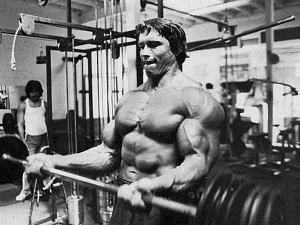- Progressive overload over a wide range of rep ranges
- Perfect form at all times
- Using exercises that work well for your body type
- Get stronger with big, compound lifts
- Get stronger with isolation exercises
- Use intensity techniques
Now, don’t take this as me saying you shouldn’t be training hard. You absolutely should. But you need to train within your recovery capacities. Especially if you’re natural with average genetics, like most of us are.
I remember when I started working with my current coach; the first piece of advice he gave me was to pull back on the intensity methods. I was running DC training (which is all based around the rest-paused method) for weeks on end and digging myself into a bigger and bigger hole of recovery, to the point injuries were racking up and I was constantly burnt out.
Now, the point here isn’t that DC training is bad, because I happen to rate it as one of the best systems out there. Instead, my motivation abused the methodology, and so I wasn’t able to extract the results I could have.
My approach to intensity methods now is a lot different.

Beginners
Intermediates
In most cases, you could probably milk standard progressions for a lot longer than you think.
However, I’m not against adding a little here and there to maximise the pump and drive up a ton of metabolic stress into the muscle.
If you’re at the intermediate stage, you’ll likely have a solid foundation of both strength and muscle. And so you’ll benefit from some high rep work and pump training to further develop your physique.
In addition to some higher rep sets, you could also play around with adding intensity techniques to your isolation exercises like curls, pushdowns, lateral raises, leg extensions and leg curls. Pick one exercise per workout, and add any intensity technique to the last set – no need to go overboard here.
Advanced
Progressive overload will be harder to come by now, and so using new and novel approaches in your training can help keep you both physiologically and psychologically engaged.
It can also help improve longevity, which becomes an important concern when you reach certain strength levels, or you’ve got a history of injury problems.
In these scenarios, I like to use techniques as both ‘intensifiers’ and ‘volumisers’ in a set. What I mean by ‘intensifiers’ is using any technique that makes the rep harder in some way, or as the saying goes, ‘making light weight feel heavy’. This includes pausing in difficult positions, slow eccentrics, and using mechanically disadvantageous grips or stances.
I use these a lot in my own training to help protect joints and safeguard against old injuries. More often than not, I always like to use a controlled negative before pausing the rep in the hardest position.
In fact, I’d venture to say that no matter what your training age, you should always aim to intensify every rep of every set in this manner. You’ll enhance your mind-muscle connection, control of the weight, and safety when training.
Where things become a little more complicated is with ‘volumisers’. As I mentioned, they can be abused very easily. In my own training, I have a few favourites:
Partials
This burns a ton, but is brutally effective in getting a big pump. If you then go on to perform a squat type movement after doing partial leg curls, the extra pump should help provide a ‘cushion’ at the bottom of the rep.
Drop Sets

Super + Trisets
Rear delt raises x 10-15
Side laterals x 10-15
Face pulls x 10-15
The Progression Issue
That’s why you should only use these as your icing on the cake, and to be done after your heavy progressive work is finished.
One thing you’ll notice in the examples above is I steered clear of using intensity techniques on heavy compound exercises. This is for safety reasons, and the risk that you put yourself under when doing exercises like bent over rows, bench presses, squats and deadlifts when in a fatigued state.
Rest Paused
The premise of it is to perform multiple sets to failure with 10-30 second rest periods.
Two of my favourite methods are:
- DC style: here you’ll perform three sets to failure with 30 seconds rest in between each failure point, while taking 10 deep breaths. This is considered the ‘standard’ approach to rest-paused training in bodybuilding.
- Muscle Rounds: in this method popularised by Scott Stevenson, you’ll execute 6 sets of 4 with 10 seconds rest in between, using your 15RM. This is brutal – especially on compound leg exercises!
Natural Rules Of Intensity Techniques
If you’re going to use something like a rest-paused set, you only need to do it once. Which is also why beginners won’t get much out of it, because their ability to maximally recruit muscle mass during a set is limited, and they’ll require more repeated efforts in a fresh state.
I’d use no more than one intensity technique per workout, and prioritise them more on your isolation lifts so that your recovery isn’t too taxed.
If you want to use them on heavier lifts, I like to cycle their use. This means you can either use them for 3-6 weeks and then return to more traditional straight sets. Or you can use them every 3-4 weeks.
Know Your Place
Traditional strength gains using straight sets on compound exercises will always win. So if you’re not focusing 80% of your time and energy with them, you’re selling yourself short.
Think of intensity techniques as one of many tools in your toolbox that when applied correctly and strategically, may provide you with that extra 1%.

.png)
.jpg)